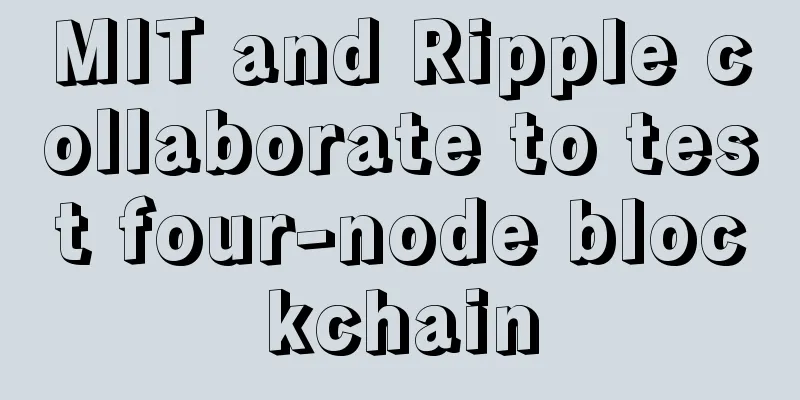MIT and Ripple collaborate to test four-node blockchain

|
MIT and technology startup Ripple are collaborating to bring blockchain research to a practical level. MIT has been committed to Bitcoin and blockchain industry research for many years, and the goal of this collaboration with Ripple is to develop blockchain, financial services and enterprise data projects. David Shrier, director of MIT's Connected Science and Engineering Program, said he hopes the collaboration with Ripple will attract more researchers. He said: "It's one thing to develop a blockchain with four nodes for testing, and it's another to connect to a larger global network of nodes." The research was conducted by seven students and professors. As part of the study, MIT tested a validator for Ripple's permissioned ledger system, Consensus Ledger. The validator is a server that confirms transactions on the network where the digital asset XRP is located. MIT has been directly involved in blockchain research since early 2015, supporting Bitcoin development through its Digital Currency Initiative. Last month, MIT's Digital Currency Initiative raised $900,000 to support the work of Bitcoin developers. Investors include venture capitalist Fred Wilson and LinkedIn founder and executive chairman Reid Hoffman. MIT’s decision to use Ripple over other options was partly because Shrier believes Ripple is very good at leveraging funds, adding that MIT is very interested in “other flavors” of bitcoin development. Laying the foundationIn fact, MIT's research on blockchain stems from its long-term support for open source projects. Since 2007, MIT's Internet Trust Consortium, whose members include UBS and NTT, has been developing open-source projects to help people better manage data. Last year, the consortium began publishing blockchain research results in collaboration with MIT's Connected Science and Engineering. In June, members of the association released the results of their research project "Enigma", which focuses on how developers can use blockchain to build a decentralized cloud system. The project, co-led by Pentland, uses an external blockchain to manage visitor data and identities. Currently, the project is in the testing phase. In January, Pentland and Ripple project leader Thomas Hardjono published preliminary results of a study on ChainAnchor. While the final results of the study are not yet available online, the early results suggest that ChainAnchor can protect user privacy within a permissioned blockchain. A paper and website investigating the final results of ChainAnchor will be forthcoming. The Ripple project is led by MIT professor Alex Pentland, program director of connected science and engineering David Shrier, and chief technology officer Thomas Hardjono. Shrier said that more researchers will join the project in the next six months. Future researchOverall, there are now about 36 blockchain research projects at MIT, with 50 to 70 researchers involved in them, Shrier said. “I am confident that the number of these research projects and researchers will only grow,” he said. As part of his research on blockchain, Shrier will teach his first online course in June, titled Future Business. Previously, he taught in a traditional way, with 50 students creating 19 projects, five of whom are now creating their own startups. So far, 500 students have signed up for the 12-week course, which costs $2,300, and Shrier said he expects to have 1,000 students by the time the course starts. |
<<: BTCC Professional Trading Launches OCO Order Function!
>>: How is blockchain technology used in the field of bills?
Recommend
Polkadot is already the second largest DeFi ecosystem and is progressing at full speed. Is it worth looking forward to in 2021?
On December 29, 2020, the Polkadot-based DeFi agg...
What are the characteristics of a villain who likes to make things difficult for others?
Nowadays, some people often lack tolerance. Rathe...
What is the fate of a girl with both dimples and dimples?
What is the fate of a girl who has both dimples o...
The face that likes to listen to music at home on weekends
Sometimes, listening to music is also a kind of h...
Do you know how to read the corners of the mouth?
Many people know about face reading, and they als...
Which facial features are most likely to be affected by your mood?
Mood is a very unique existence, and the quality ...
Bitcoin rebound is blocked, $35,000 becomes the key support level
Author | Hashipi Analysis Team...
It is said that the "debt" has been paid and Bitmain will hold a conference in Hainan to promote sales (Bitmain Series 25)
Wu Blockchain exclusively learned that Bitmain wi...
Who has good luck according to their face?
Everyone hopes that good luck will always be with...
A person who has his own ideas and will not be led by others
In daily life and work, no matter what happens, y...
Analysis of facial features with moles on nose wings
In physiognomy, if a woman has a mole on the wing...
Is digital currency really at a dead end based on monetary policy?
About the author : Hedy Bi, undergraduate degree ...
How to tell marriage from facial features? Which types of people will be happy if they marry early or late?
Marriage is a very important thing in people'...
What does the eyelid mean? Good luck in love.
For a person, his or her facial features can ofte...
What is the fate of a woman with a mole on her crow's feet? Good life?
Traditional physiognomy covers a wide range, among...









